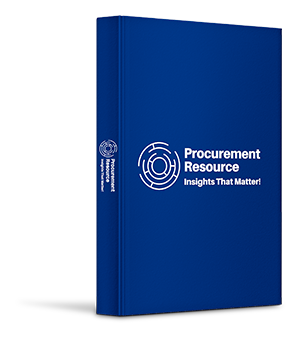Reports

Global Industrial Ethanol Market: Country Overview; Value Chain Analysis; Production Process; Trade Analysis; Cost Structure; Market Dynamics: Drivers & Constraints, Industry Events, Innovations & Trends, SWOT Analysis, Porter’s Five Forces; Industry Best Practices: Sourcing Strategy, Procurement Model, Contract Structure, Negotiation Levers, Pricing Model; Key Supplier Analysis, 2024-2032
Customer Industrial Ethanol Industry Report by Regional Category Spend, Price Analysis, Key Demand, Price Indicators, and Best Buying Practices
The global industrial ethanol market reached a volume of about 8.88 billion litres in 2021. The industry is projected to grow at a CAGR of around 3.5% in the forecast period of 2022-2027 to reach a volume of 9.94 billion litres by 2027.
The industrial ethanol industry report comprehensively analyses the industry, including key segments, trends, drivers, restraints, the competitive landscape, and other essential market aspects. Industrial application of ethanol accounts for 7% of the total consumption of the product. The industrial ethanol industry is led by technological improvements and usage-specific advancements. The key demand indicator in the industry report is the highest category spender by region — North America.
Industry Definition and Segmentation
Ethanol also called ethyl alcohol, can be produced synthetically from petrochemical feedstock such as coal and oil derivatives or maybe organically obtained from starch and sugar sources like sugar cane, maize, sugar beet, wheat, rye, and potatoes. Ethanol is one of the greatest volumes of natural chemicals that are utilised in industrial and consumer commodities. The global industrial ethanol industry report comprises segments based on type (synthetic ethanol and bioethanol), raw material (1st generation feedstock (kernels and starchy crops biomass), 2nd generation feedstock T(industrial waste CO2) and petroleum-derived chemicals), application (transportation, energy, chemical, and others), and regions (Europe, North America, Asia Pacific, Latin America, and the Middle East and Africa).
North America and Latin America Regions are Driving the Growth of the Industry
The largest producer of industrial ethanol is the United States, followed by Brazil which manufactures a major part of the bioethanol globally. The market in North America is driven by the processing of industrial ethanol as an ideal material. Furthermore, the rising awareness of consumers regarding the utilisation of antibacterial commodities like hand sanitizer and cleaners for exterior areas to stop the spread and possible harm caused by viruses and bacteria is leading to the market development. Such products are produced by using industrial-grade ethanol and are gaining substantial demand specially among modern consumers.
The most important market driver responsible for the growth of the global ethanol market is the governing force towards the manufacturing of bioethanol. Rising awareness about decreasing carbon emissions and utilisation of substitute fuels is also driving the biofuel market. Steps such as technological advancements, application-based developments, digitalisation of operations, and modification as per the developing technologies in robotic mechanisms along with artificial intelligence are taken by the market players in the industrial ethanol market which is helping in furthering the growth of their business. In addition, capitalising on research and development to enhance the product range is acting as a critical growth factor in the short to medium term for the industrial ethanol industry.
Nevertheless, the important constraint for the global ethanol market is the inaccessibility of high-end equipment for ethanol production in emerging economies. Also, several countries are moving towards bioethanol and are shifting from their reliance on petroleum-originated ethanol.
Best Procurement Practices
The global industrial ethanol industry report by Procurement Resource gives an in-depth analysis of the best buying practices followed by industrial ethanol producing and utilising regions across the globe, such as contract terms, engagement models, and buyer and supplier negotiation levers, among others.
Category Management Studies
Ethanol can be produced by using innumerable procedures. The majority of ethanol globally is manufactured by the process of fermentation of crops (93%) with artificial ethanol (7%) which is produced by immediate hydration of ethene. An environmentally friendly and renewable alternative to ethanol, bioethanol, is made from biomass by hydrolysis and sugar fermentation methods. Bioethanol completely consists of biological products, and therefore, its incineration emits cleaner gas.
The Growth in Demand for Bio-Based Industrial Ethanol is Further Driving the Procurement of the Raw Material
Owing to the pervasive application of industrial ethanol as biofuel at present, the demand for industrial ethanol soared in the market. The U.S. is controlling the raw material segment because of the extensive demand for bio-based ethanol as a result of the federal government regulations that command the addition of ethanol in all fuels sold in the U.S. market. Due to the widespread biotechnological research in the region that needs a vast quantity of industrial ethanol the raw material segment in Germany is ruling the European market. China, in the Asia Pacific region, is leading the bio-ethanol segment because of the high demand for personal and self-care products such as hand sanitisers, oral care items that need ethanol for their manufacturing
The major zones in the industry are North America, Europe, Latin America, the Asia Pacific, and the Middle East, and Africa.
Key Industry Players Mentioned in the Industrial Ethanol Industry Report
- CropEnergies AG
- The Archer-Daniels-Midland Company
- Cosan S.A.
- Tereos
- Cargill Inc.
Market Landscape
The third-generation bio-ethanol feedstocks based on the raw material segment of industrial ethanol represent a promising raw material because of its numerous advantages over first and second-generation feedstocks. Similarly, the bio-ethanol segment has gained huge popularity in the past few years owing to the regulations and agreements signed by various governments to utilise substitute fuels and technologies to bring down global greenhouse gas emissions and alleviate climate change in the future.
Key Initiatives by Companies
- Albioma declared in February 2019 the industrial authorising of the first peak-load combustion turbine (CT) operating essentially on bioethanol as a feedstock in Saint-Pierre, Reunion Island. There are two types of fuels that work in the CT that is, bioethanol (80%) from the purification of sugarcane molasses, created locally at the Rivière du Mat distillery, and diesel fuel (20%), which is required to turn on the turbine.
- In August 2019, the Maharashtra state government pursued permission from the Central Government of India to authorise sugar-making factories based in Maharashtra to transform the sugar stock into ethanol.
1. Executive Summary
2. Global Industrial Ethanol Market Snapshot
2.1. Industrial Ethanol Market Outlook
2.2. Country Overview
2.2.1. US
2.2.2. Brazil
2.2.3. Europe
2.2.4. Asia
2.2.5. Others
3. Impact of Recent Events
4. Industrial Ethanol Value Chain Analysis
5. Industrial Ethanol Production Process
6. Trade Analysis
7. Major Risk Factors in Sourcing
8. Industrial Ethanol Cost Structure
9. Industrial Ethanol Price Analysis
10. Key Demand Indicator Analysis
11. Key Price Indicator Analysis
12. Industrial Ethanol Market Dynamics
12.1. Drivers & Constraints
12.2. Industry Events
12.3. Innovations & Trends
12.4. SWOT Analysis
12.5. Porter’s Five Forces
12.5.1. Buyer Power
12.5.2. Supplier Power
12.5.3. Threat of New entrants
12.5.4. Threat of Substitutes
12.5.5. Industry Rivalry
13. Feedstock Market Analysis
13.1. Market Overview
13.2. Price Analysis
14. Industry Best Practices
14.1. Sourcing Strategy
14.2. Procurement Model
14.3. Contract Structure
14.4. Negotiation Levers
14.5. Pricing Model
14.6. Key Factors Influencing the Quotation
15. Key Supplier Analysis
15.1. CropEnergies AG
15.2. The Archer-Daniels-Midland Company
15.3. Cosan S.A.
15.4. Tereos
15.5. Cargill Inc.
In 2021, the global attained a volume of around 8.88 billion litres in 2021.
In the forecast period of 2022-2027, the market is projected to grow at a CAGR of 3.5%.
The major market driver is the rising awareness of consumers regarding the utilisation of antibacterial commodities like hand sanitizer and cleaners and the governing force towards the manufacturing of bioethanol.
The major regions in the industry are North America, Europe, the Asia Pacific, Latin America, and the Middle East and Africa.
Some of the leading players in the industry are CropEnergies AG, The Archer-Daniels-Midland Company, Cosan S.A., Tereos, and Cargill Inc.
The global industrial ethanol market reached a volume of about 8.88 billion litres in 2021 and is projected to grow at a CAGR of around 3.5% in the forecast period of 2022-2027. Ethanol is one of the greatest volumes of natural chemicals that are utilised in industrial and consumer commodities. The largest producer of industrial ethanol is the United States, followed by Brazil which manufactures a major part of the bioethanol globally. Additionally, the rising awareness of consumers regarding the utilisation of antibacterial commodities like hand sanitizer and cleaners for exterior areas is leading to market development. Some of the leading players in the industry are CropEnergies AG, The Archer-Daniels-Midland Company, Cosan S.A., Tereos, and Cargill Inc.
Procurement Resources’ detailed research approach explores deep into the industry, encompassing the macro and micro aspects of the industry. Its team of experts uses a combination of cutting-edge analytical tools and their expertise thus, delivering its customers with market insights that are accurate, actionable, and help them remain ahead of their competition.
Compare & Choose the Right Report Version for You
RIGHT PEOPLE
At Procurement Resource our analysts are selected after they are assessed thoroughly on having required qualities so that they can work effectively and productively and are able to execute projects based on the expectations shared by our clients. Our team is hence, technically exceptional, strategic, pragmatic, well experienced and competent.
RIGHT METHODOLOGY
We understand the cruciality of high-quality assessments that are important for our clients to take timely decisions and plan strategically. We have been continuously upgrading our tools and resources over the past years to become useful partners for our clientele. Our research methods are supported by most recent technology, our trusted and verified databases that are modified as per the needs help us serve our clients effectively every time and puts them ahead of their competitors.
RIGHT PRICE
Our team provides a detailed, high quality and deeply researched evaluations in competitive prices, that are unmatchable, and demonstrates our understanding of our client’s resource composition. These reports support our clientele make important procurement and supply chains choices that further helps them to place themselves ahead of their counterparts. We also offer attractive discounts or rebates on our forth coming reports.
RIGHT SUPPORT
Our vision is to enable our clients with superior quality market assessment and actionable evaluations to assist them with taking timely and right decisions. We are always ready to deliver our clients with maximum results by delivering them with customised suggestions to meet their exact needs within the specified timeline and help them understand the market dynamics in a better way.

Global HEOR Service Market: Size, Trend, Analysis and Forecast 2024-2032
The global HEOR market reached a value of about USD 1364.3 million in 2021. The industry is further expected to grow at a CAGR of about 12.81% in the forecast period of 2022-2027 to reach a value of around USD 2779.2 million by 2027.

Global Artificial Intelligence Market: Size, Trend, Analysis and Forecast 2024-2032
The global Artificial Intelligence Market reached a value of about USD 192 Billion in 2021. The industry is projected to grow at a CAGR of around 23% in the forecast period of 2022-2027 to reach a value of about USD 664.86 Billion by 2027.

Global Nutmeg Market: Size, Trend, Analysis and Forecast 2024-2032
The global nutmeg market reached a value of about 134 thousand tonnes in 2021. The industry is further expected to grow at a CAGR of about 4.5% in the forecast period of 2022-2027 to reach a value of around 167 thousand tonnes by 2027.
